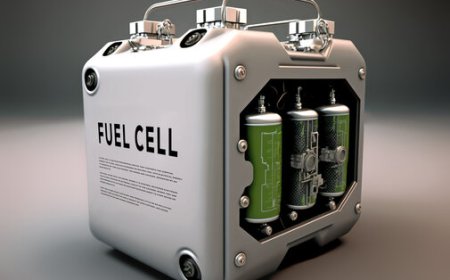White Revolution 2.0
White Revolution 2.0 aims to modernize India’s dairy industry through innovation, sustainable practices, and increased milk productivity while supporting farmers and reducing environmental impact.

India, the worlds largest producer of milk, owes much of its dairy success to the historic White Revolution led by Dr. Verghese Kurien in the 1970s. This movement transformed India from a milk-deficient country to a global leader in dairy production. However, over the decades, new challengesclimate change, rising demand, fodder scarcity, and changing consumer preferenceshave emerged. To address these, India now needs a White Revolution 2.0.
White Revolution 2.0 is not just about increasing milk output. Its a comprehensive vision that integrates technology, sustainability, farmer empowerment, animal welfare, and nutrition. This next phase aims to revitalize the dairy industry in the 21st century, keeping pace with modern needs and global standards.
? Looking Back: The Legacy of the Original White Revolution
Launched in 1970, the original White Revolution was spearheaded by Operation Flood, an initiative of the National Dairy Development Board (NDDB). Its goals were simple but powerful:
-
Increase milk production
-
Provide fair prices to farmers
-
Eliminate middlemen
-
Create a nationwide milk grid
Within a few decades, India became self-sufficient in milk, supporting rural economies and improving nutrition. The model relied heavily on cooperative structures, cold chain development, and grassroots participation.
? Why India Needs White Revolution 2.0
Despite its past success, the Indian dairy sector today faces multiple challenges:
1. Stagnant Productivity
While India produces the most milk globally, its per-animal productivity is among the lowest. Local breeds produce significantly less milk compared to their global counterparts.
2. Fodder and Water Scarcity
With shrinking agricultural land and climate change impacts, ensuring year-round fodder availability and clean water for livestock is becoming increasingly difficult.
3. Unorganized Sector Dominance
More than 70% of milk is still produced and consumed in the unorganized sector, where hygiene, pricing, and veterinary support remain inadequate.
4. Climate Change
Heat stress and changing weather patterns affect animal health, milk yield, and fodder quality.
5. Youth Disinterest
Dairy farming is often seen as a labor-intensive and low-profit activity, discouraging young farmers from entering the sector.
6. Consumer Expectations
Modern consumers are demanding hygienic, organic, traceable, and cruelty-free dairy products, pushing the industry to evolve rapidly.
? What Is White Revolution 2.0?
White Revolution 2.0 is a proposed transformation of Indias dairy sector through:
-
Technology-driven interventions
-
Sustainable practices
-
Improved animal welfare
-
Better value chains
-
Focus on nutrition and exports
It aims to boost productivity and profitability while reducing the sectors environmental footprint.
? Key Pillars of White Revolution 2.0
1. Digitization and Smart Dairy Tech
Embracing Artificial Intelligence (AI), Internet of Things (IoT), and blockchain can revolutionize dairy farming.
-
Smart collars and wearable sensors track animal health, movement, and reproduction cycles.
-
Mobile apps help farmers get real-time veterinary advice, market prices, and training.
-
Blockchain ensures transparency and traceability in the supply chain, from cow to consumer.
2. Breed Improvement and Genetics
White Revolution 2.0 emphasizes improving indigenous breeds through:
-
Artificial insemination with high-yielding genetics
-
Selective breeding programs
-
Promoting native, climate-resilient breeds like Gir, Sahiwal, and Red Sindhi
3. Fodder Innovation and Feed Management
New fodder varieties and hydroponic green fodder units can address the fodder crisis.
-
Balanced Total Mixed Ration (TMR) improves digestion and milk output.
-
Silage production helps preserve fodder during off-seasons.
-
Fodder cooperatives and community grazing systems ensure affordability and availability.
4. Animal Health and Welfare
Healthy animals produce more milk. White Revolution 2.0 focuses on:
-
Regular vaccination and deworming campaigns
-
Disease surveillance systems (e.g., for Foot-and-Mouth Disease)
-
Training farmers in ethical practices and animal handling
Animal welfare standards also appeal to conscious consumers in India and abroad.
5. Farmer Empowerment and Cooperatives
Empowering dairy farmers, especially women, is key:
-
Support Self-Help Groups (SHGs) and Women Dairy Cooperatives
-
Financial literacy, access to credit, and insurance
-
Direct procurement systems with transparent pricing models
6. Value Addition and Product Diversification
White Revolution 2.0 encourages moving beyond raw milk:
-
Setting up dairy processing units for cheese, yogurt, flavored milk, and ghee
-
Encouraging organic dairy and A2 milk production
-
Promoting export-ready packaging and quality certifications
Value addition can double farmers income and reduce wastage.
7. Sustainable and Climate-Resilient Practices
Making dairy farming eco-friendly is non-negotiable today:
-
Promote manure management systems like biogas digesters
-
Reduce methane emissions through modified diets
-
Use solar-powered milking machines and cold storages
-
Encourage rainwater harvesting and water-efficient cooling systems
??? Government and Private Sector Role
White Revolution 2.0 requires public-private partnerships (PPPs) to scale innovations.
Government Initiatives:
-
Rashtriya Gokul Mission: Breed improvement and indigenous cow promotion
-
National Dairy Plan: Infrastructure development and technology dissemination
-
e-Gopala App: A digital platform for animal husbandry management
Private Sector:
-
Agri-tech and dairy-tech startups
-
CSR programs in rural development
-
Investment in dairy infrastructure and cold chains
? Nutrition and Consumer Health
Dairy is a vital source of protein, calcium, and micronutrients. White Revolution 2.0 links dairy to public health, especially in:
-
Mid-Day Meal Programs
-
Integrated Child Development Services (ICDS)
-
Combatting malnutrition and stunting in rural areas
Affordable, safe, and nutritious milk should be available to every Indian household.
? Export Potential of Indias Dairy Sector
Indias dairy sector can grow into a global leader by:
-
Meeting international food safety standards
-
Creating premium brands (e.g., organic ghee, A2 milk)
-
Tapping diaspora markets with traditional Indian products
With rising demand in Asia, Africa, and the Middle East, White Revolution 2.0 can make India a dairy export powerhouse.
? The Road Ahead: Challenges and Opportunities
While the vision is ambitious, implementing White Revolution 2.0 needs:
-
Farmer training and digital literacy
-
Supply chain coordination
-
Market linkages and branding
-
Investment in R&D
Indias strength lies in its millions of small dairy farmers. By empowering them with technology, knowledge, and market access, the country can write the next chapter of its dairy success story.
? Conclusion
White Revolution 2.0 is more than just a sequel to a historic movementits a strategic transformation designed to future-proof Indias dairy industry. As the country aspires to double farmers income, ensure nutritional security, and fight climate change, the dairy sector holds incredible potential.
Through innovation, sustainability, and inclusive growth, White Revolution 2.0 can uplift rural lives, feed a growing population, and make India proud once again.





























